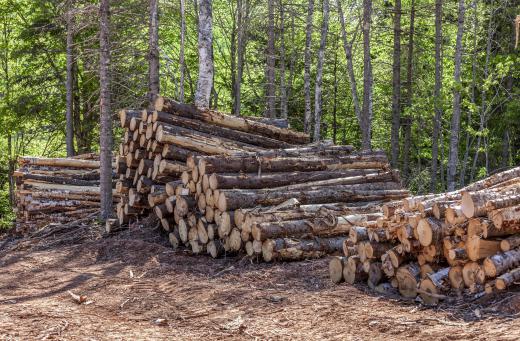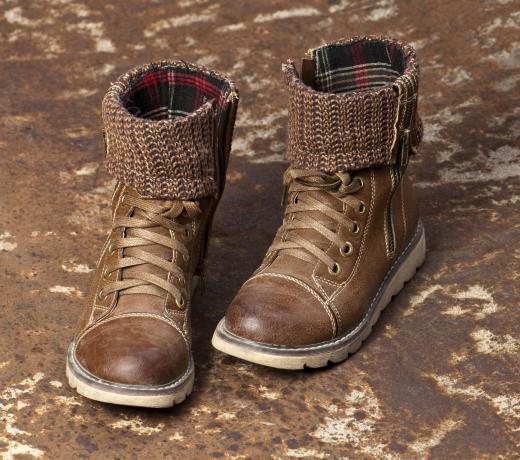Steel toed boots are protective footwear designed with a steel insert in the toe which covers the front part of the foot. They are especially useful for construction workers and others who are at risk of having heavy objects dropped on their feet, as the steel toes can prevent injuries. Steel toed boots have also been adopted by the counterculture, which is fond of the sturdy and durable construction techniques used to make them.
In addition to the steel toe, steel toed boots use heavy materials like leather or highly durable synthetics to protect the top of the foot and the lower calf. Most of the boots terminate midway up the calf, and provide insulation and protection to the ankle and arch of the foot as well as the toe. Most steel toed boots employ a lace up construction, although some zip along the inside of the foot. The boots are designed for both men and women, and can be found in a variety of colors in addition to basic black.

On some job sites, steel toed boots are required safety footwear. This is especially common on logging and construction sites, particularly sites where heavy iron beams are being handled. The durable work boots will support the foot throughout the day while providing protection, assuring the worker that his or feet are safe and less prone to injury. People with inadequate foot protection may experience physical damage which prevents them from working, sometimes for very long periods of time.

People who prefer their shoes ruggedly built and long lived also purchase steel toed boots. The boots can be worn on a daily basis and will last many years if cared for properly. People concerned about moisture can waterproof their steel toed boots to provide an impenetrable barrier to rain and cold, two things which can cause discomfort in the feet. Steel toed boots also carry a no-nonsense, practical air of menace which appeals to some consumers who like to cultivate that look.

When purchasing steel toed boots, a few things should be taken into account. The boots should be tried on with heavy socks, and should be a little bit loose, ideally about half a size. Loose boots allow the foot to expand, which will happen during a long day on a hot job site, as feet swell with physical activity. The boots should also be wide enough: if you have broad feet, alert the salesperson so that he or she can help you select the best pair of boots. Finally, the boots should provide sufficient arch support. If they do not, purchase inserts to raise the arch.
To care for your new steel toed boots, use a specially designed leather cleaner like saddle soap with a damp sponge to remove dirt from your shoes periodically. After you have cleaned the boots and dried them, condition them with a leather care product or a moisturizer to keep the leather soft, supple, and clean. If the shoes are made from a synthetic, use a mild soap and water to wash them, and treat them with a waterproofing product when they are dry.
Ever since she began contributing to the site several years ago, Mary has embraced the exciting challenge of being a About Mechanics researcher and writer. Mary has a liberal arts degree from Goddard College and spends her free time reading, cooking, and exploring the great outdoors.

